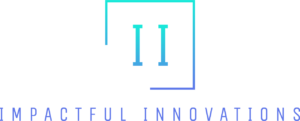Education is the cornerstone of personal growth and societal progress. However, traditional educational systems often come with their own set of limitations and barriers that hinder students’ learning experiences. In order to overcome these obstacles and unlock the full potential of education, innovative approaches are needed. By breaking barriers and inspiring minds through innovative educational methods, we can revolutionize the way we teach and learn, creating a more inclusive and effective learning environment for all.
Understanding the Barriers in Education:
In the traditional education system, students often face various barriers that impede their learning journey. These barriers can include limited access to quality education, socioeconomic inequalities, outdated teaching methods, and rigid curriculum structures. Additionally, individual learning differences and diverse cultural backgrounds can further exacerbate these challenges. Recognizing and addressing these barriers is crucial to ensure that every student has equal opportunities to succeed.
Exploring Innovative Approaches in Education:
Innovative approaches in education aim to disrupt the status quo and introduce fresh perspectives to teaching and learning. These approaches can encompass a wide range of methodologies, such as personalized learning, project-based learning, flipped classrooms, and competency-based education. By tailoring education to individual needs, interests, and learning styles, innovative approaches empower students to take ownership of their education and actively engage in the learning process. They foster critical thinking, problem-solving skills, and creativity, preparing students for the challenges of the modern world.
One notable example of an innovative approach is the Montessori method, which emphasizes hands-on learning, self-directed activities, and individualized instruction. Another approach gaining traction is the use of gamification, incorporating game elements and mechanics into educational activities to enhance student motivation and engagement.
Breaking Barriers with Technology:
Technology has emerged as a powerful tool in breaking barriers in education. Online learning platforms, virtual classrooms, and educational apps provide access to education regardless of geographical location or physical limitations. These digital tools offer flexibility, enabling students to learn at their own pace and in their preferred environment. Moreover, technology facilitates communication and collaboration among students and educators, creating virtual communities that transcend physical boundaries.
Through adaptive learning software and artificial intelligence, technology can personalize the learning experience by assessing students’ strengths and weaknesses, tailoring content accordingly. Virtual reality (VR) and augmented reality (AR) technologies offer immersive learning experiences, transporting students to different environments and making abstract concepts tangible. By harnessing the potential of technology, we can bridge the gap and provide equitable education opportunities to learners around the world.
Inspiring Minds through Creative Teaching Methods:
Innovative approaches to education encourage educators to think outside the box and employ creative teaching methods that inspire and engage students. Project-based learning, for example, encourages students to tackle real-world problems, fostering critical thinking and collaboration skills. Experiential learning provides hands-on experiences, allowing students to apply theoretical knowledge in practical contexts.
Teachers can also integrate arts, music, and drama into the curriculum to stimulate creativity and self-expression. By incorporating interdisciplinary approaches, students can connect different subjects and see the relevance of their learning to the real world. These innovative teaching methods go beyond memorization and standardized testing, nurturing a love for learning and lifelong curiosity.
Collaborative Learning and Community Engagement:
Education is not limited to the classroom; it extends to the broader community. Collaborative learning environments encourage students to work together, share ideas, and learn from one another. Peer-to-peer learning promotes collaboration, empathy, and the development of interpersonal skills. By fostering a sense of community within the learning process, students gain a deeper understanding of diverse perspectives and the value of collective knowledge.
Community engagement initiatives, such as service-learning projects, allow students to apply their skills and knowledge to address real community needs. These experiences cultivate empathy, social responsibility, and a sense of civic duty. By involving the community in education, we create a supportive network that nurtures students’ growth and opens doors to new opportunities.
Takeaway
Innovative approaches to education have the power to break barriers and inspire minds. By recognizing and addressing the limitations of traditional educational systems, we can create inclusive learning environments that cater to diverse needs and foster a love for learning. Through technology, creative teaching methods, and collaborative community engagement, we can revolutionize education and unlock the full potential of every student. Let us embrace these innovative approaches and work together to shape a brighter future for education.




